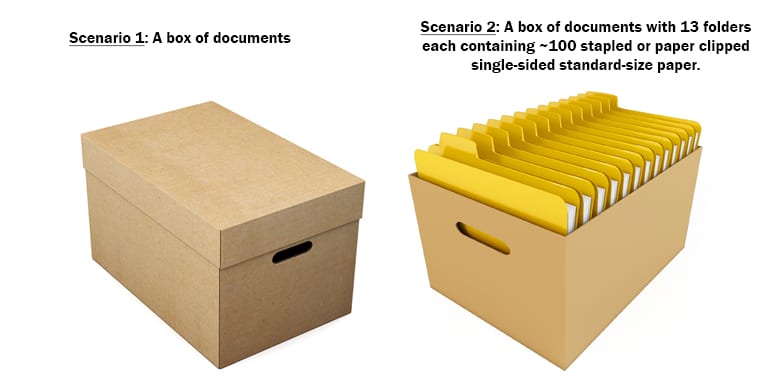
In our earlier blog, “Outsourcing Document Scanning: How to Get the Best Price from the Most Qualified Vendor,” we explored the level of detail that a bidder needs in order to provide accurate turnaround times and pricing. To emphasize that point, contrast these two scenarios:

In the first scenario, the contents of the box are a complete mystery. How many documents? What are the document dimensions? Are they bound? Are they one or two-sided or both? Without more information, each vendor will make their own assumptions about its contents and effort required and submit a bid based on those assumptions. As a result, when evaluating the bids, you will be comparing apples to oranges — and that fruit could be a lot more expensive than it deserves to be because your bidders did not have enough detail to go on.
In the second scenario, the bidder is provided more details of the box’s contents such as the approximate number of documents, etc. With this information in hand, bidders can better gauge the processes (and therefore manpower and technology) required to get the job done and submit firm fixed pricing with reasonable service quality levels. And you get to compare apples to apples in the bid review process.
The next question becomes “How do you know if your statement of work (SOW) in fact provides that necessary detail?” Simple. Ask an industry expert to review your SOW. The GSA Schedule 36 lists numerous qualified companies, including TDEC. Based on their long experience, these companies can tell you whether your SOW is sufficient to get the best pricing from the most qualified vendors. By tapping into this resource, everyone wins — the competing vendors, the government agency and ultimately, the taxpayer!